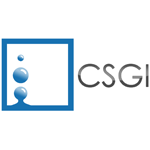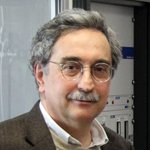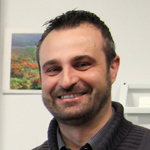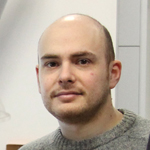 |
CSGI
|
|
CSGI (Consorzio Interuniversitario per lo Sviluppo dei Sistemi a Grande Interfase, Research Center for Colloid and Surface Science) is an Italian public research organization established in December 1993 under the supervision and control of the Italian Ministry for University and Scientific Research (MIUR). The members of CSGI work in ten different Italian Universities on closely related scientific fields, concerning both fundamental and applied research. CSGI also aims at the development of high-tech new processes, as a support for the activities of the small and medium size industrial companies. CSGI researchers operate in the following scientific areas: structure and dynamics of amphipilic supramolecular assemblies (monolayers, micelles, bilayer vesicles, microemulsions, Langmuir-Blodgett films, host-guest systems), nanostructured soft and hard materials, structural analysis of biomolecules in solution, interaction processes, recognition of ligands with macromolecular surfaces, formulation of nanophasic systems. CSGI is a world leader in the realization of innovative systems and nanostructured formulations for the conservation and restoration of cultural heritage (wall paintings, stone, wood and canvas paintings, paper, parchment, and wood) as highlighted by the international interest in CSGI methods by international scientific journals and reviews, as well as national and international press and media reports. |
|
Key Persons |
|
 |
Piero Baglioni is full professor of Physical Chemistry at the Department of Chemistry of the University of Florence, and MIT affiliate. He has been appointed as Visiting Scientist/Professor by the Department of Chemistry of the University of Houston, the Weizmann Institute, the Colle?ge de France, and the MIT. He is the Director of the National Consortium for Colloid and Nanoscience (CSGI). He is the major Italian contributor to “Soft Matter” with more than 350 publications on books and on largely diffused international journals. He is also the author of 25 patents. He produced several innovations in the field of both inorganic and organic colloids.
|
 |
Rodorico Giorgi. PhD in Science for Cultural Heritage Conservation at the University of Florence and BS in Chemistry (physical-chemistry curriculum), Giorgi is currently research fellow at the Department of Chemistry of the University of Florence and CSGI - Center for colloid and surface science. Giorgi's main research interests are in physico- chemical characterization of materials, investigation of degradation processes and development of methodologies for the conservation of different works of art materials, such as wall and canvas paintings, stone, paper, photographs, and archaeological wood. Giorgi has been involved in several conservation project in different country. Among the most important can be mentioned: the proyecto Arqueologico Calakmul (Mexico), the proyecto Arqueologico Mayapan (Mexico), the proyecto Arqueologico Cholula (Mexico), the conservation prject of the Holy House in Nazareth (Israel), the Project Cure the Vasa (Sweden), and the project Saving Oseberg (Norway). Giorgi is author of about 100 publications in the field of nanoscience application to cultural heritage conservation.
|
 |
David Chelazzi. PhD in Science for Cultural Heritage Conservation at the University of Florence in 2007 and Master in Chemistry in 2003, is currently working as a research fellow at the Department of Chemistry of the University of Florence and CSGI. His main research interests are the development of methodologies for the consolidation, cleaning and pH control of works of art, such as wall and easel paintings, stone, paper, and wood. He is author and co-author of about 30 publications in the field of nanotechnology and colloids science applications to the conservation of Cultural Heritage.
|





